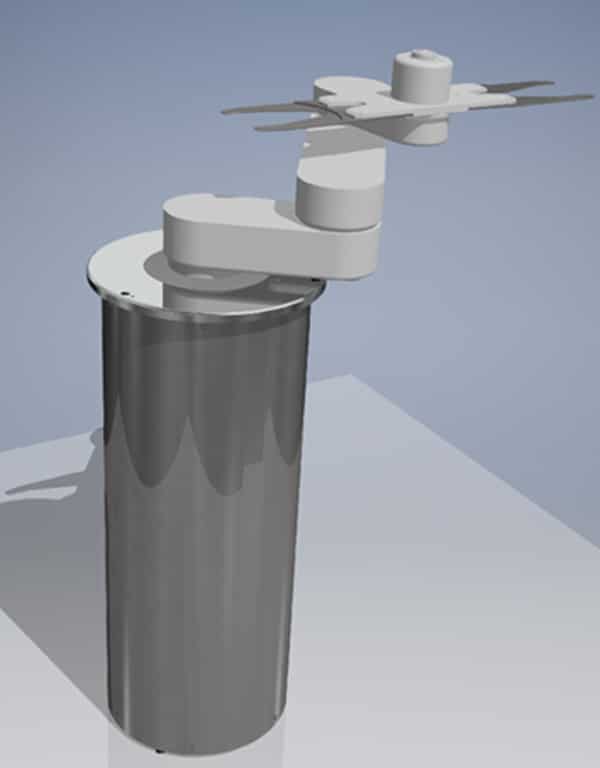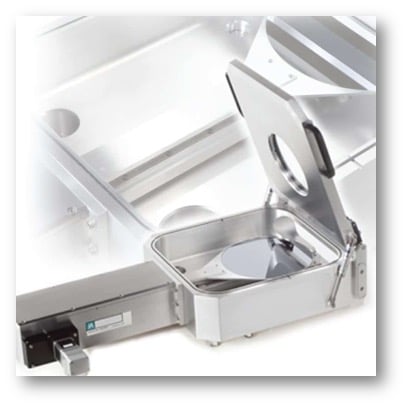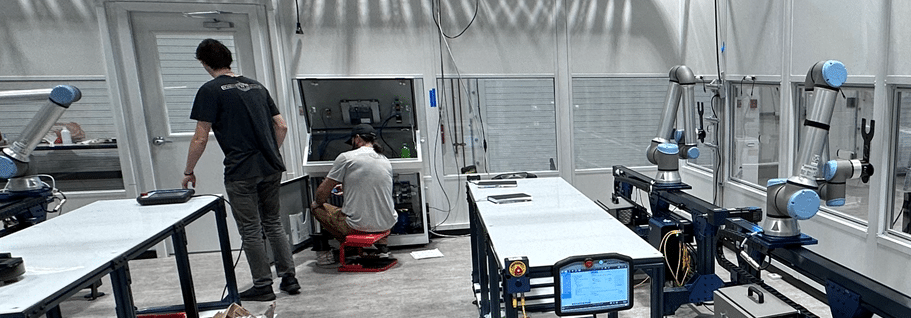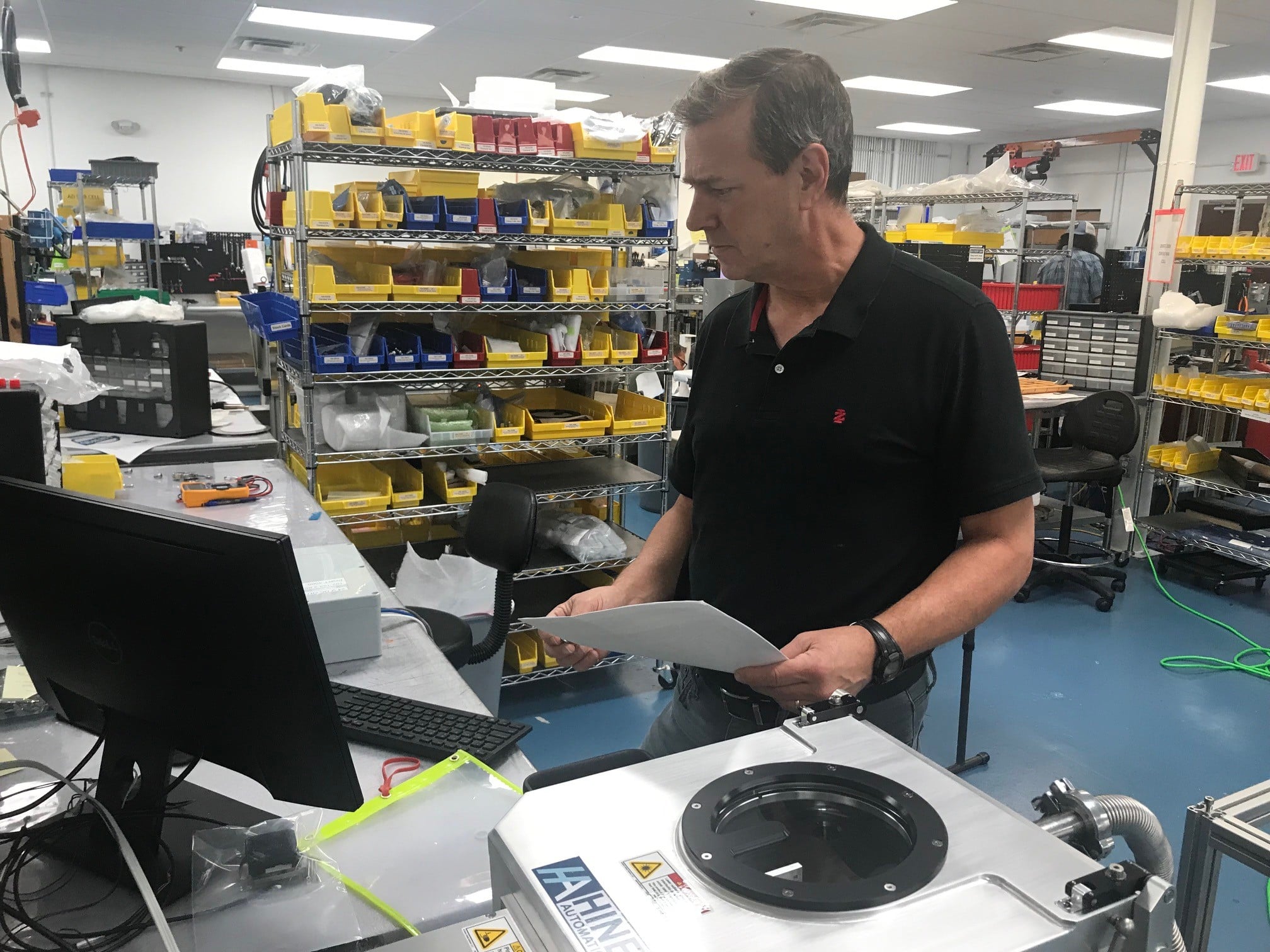Building Smarter, More Predictable Robots
Hine Automation Team
April 17, 2023

Technological advancements enable robotics to play an increasingly important role in the semiconductor industry.
Robots work at high speed, increasing production rates and making manufacturing more efficient. Today’s robots already do a lot, but to stay ahead, semiconductor wafer fabrication plants need new and innovative ways to meet targets for their production goals. In addition, these plants require extensive automation and continued innovation from their equipment suppliers, and robots must keep up.
The best way to move forward with more robust automation is with information. Data drives better decision-making and better data drives less production downtime. In the not-too-distant past, a robot did not capture the data required to monitor its needs for routine maintenance and other issues that could instantly stop an entire production line. The latest robots can do much more because of smart sensors, data processing, and motor control devices. As with any industry, there is always a need to evolve, and the innovation of robots and the components used to improve processes and efficiencies are changing rapidly.
According to ReportLinker, the future of semiconductors in the robotics market looks promising. Significant growth is expected due to both technological improvements and the growth of the semiconductor industry. This includes an increase in CAGR of 7 to 10 percent from 2022 to 2027.
Constant Improvement
With the constant need to improve reliability, performance, and accuracy for manufacturing factories, companies focus extreme efforts on maximizing value from existing investments. One company, Hine Automation, is setting the precedence for quality and versatility in the design and manufacturing of robotic components and automation systems.
“Hine Automation has always focused on implementing the right technologies to ensure we can offer the most innovative solutions to keep our customers competitive in the market,” said Scott Craver, chief executive officer, Hine Automation. “When we can focus on components that allow our robots to provide critical data on the health of the system, it allows the engineers to get in front of any unforeseen circumstances or challenges. So, looking ahead to how we can make our robots smarter, we’ve partnered with Mitsubishi Electric.”
Propelled by the advances in digital technologies, Mitsubishi Electric provides Hine with new applications and improves existing ones regarding speed, accuracy, and maintenance. The aim is to better manage the variability and unpredictability of robots in the manufacturing process. For example, with optimized functions like predictive maintenance and vibration suppression, Hine Automation can not only extend the lifespan of the robot but also provide real-time data that can be used to inform the customer when it is time to schedule essential maintenance.
A Smarter Atmospheric Robotic Arm
“Our partnership with Hine allowed two teams of extremely talented engineers and designers to bring to market a new atmospheric robotic arm to handle the semiconductor industry’s evolving throughput and accuracy demands,” said Joe Miedico, business development manager, global industry solutions, Mitsubishi Electric. “With our new technology embedded, Hine’s customers can monitor more than just the robot’s arm position. Greater accuracy, throughput, and predictive maintenance will all help make the robots more reliable.”
Using robots to handle microscopic parts has become crucial for semiconductor manufacturers. Additionally, moving silicon wafers of all different sizes at even faster rates without causing damage presents a unique challenge. Key features from Mitsubishi Electric’s MR-J5 Servo Amplifiers, including oscillation dampening and predictive maintenance, enable more accuracy and control than ever before.
Oscillation Dampening
The source of vibration in mechanical systems can come from almost anywhere, but the downside is that it can reduce system performance and likely decrease the machine’s lifespan. Precision is critical, and to mitigate these challenges, vibration must be minimized. Oscillation dampening controls the robot’s movement, acceleration, and deceleration, suppressing vibration and increasing performance and the accuracy of each movement. Other benefits include:
- Correction of mechanical issues
- Suppressed vibrations
- Extended machine lifetime
- Reduced settling time
- Improved performance
Predictive Maintenance
Predictive maintenance of robots offers the potential to increase productivity and cut costs in highly automated production systems. However, success can only be measured by the data used to monitor the robot’s overall health. Predictive maintenance detects changes in machine vibration and friction, providing advanced warning that parts require replacement before they fail.
Other benefits include:
- Significant reduction of unscheduled equipment downtime
- Reduced maintenance costs
- Increased equipment lifespan
- Increased production capacity
“Artificial intelligence and machine learning are revolutionizing maintenance practices for the semiconductor industry,” said Craver. “Any time you can use predictive maintenance with robots, you move from reactive to proactive. When we can build solutions that allow our customers to create preventative maintenance plans, we maximize their investment’s value.”
The future of robotics is bright. There will continue to be opportunities for advancement as technology evolves and customers have greater demands placed on them. Robots will continue to push the boundaries of precision engineering so adjustments must be made to increase performance and functionality. It is important to embrace these changes to keep moving forward.
About Hine Automation
Hine Automation designs and manufactures vacuum, atmospheric automation systems, and robotic components. Our team has been designing products for more than 30 years and serving our customers since 2009. We specialize in semiconductor automation for silicon and compound III-V or II-VI materials, tape frames, photomask and reticles, and solar and flat panel displays. For more information, visit us at HineAutomation.com




